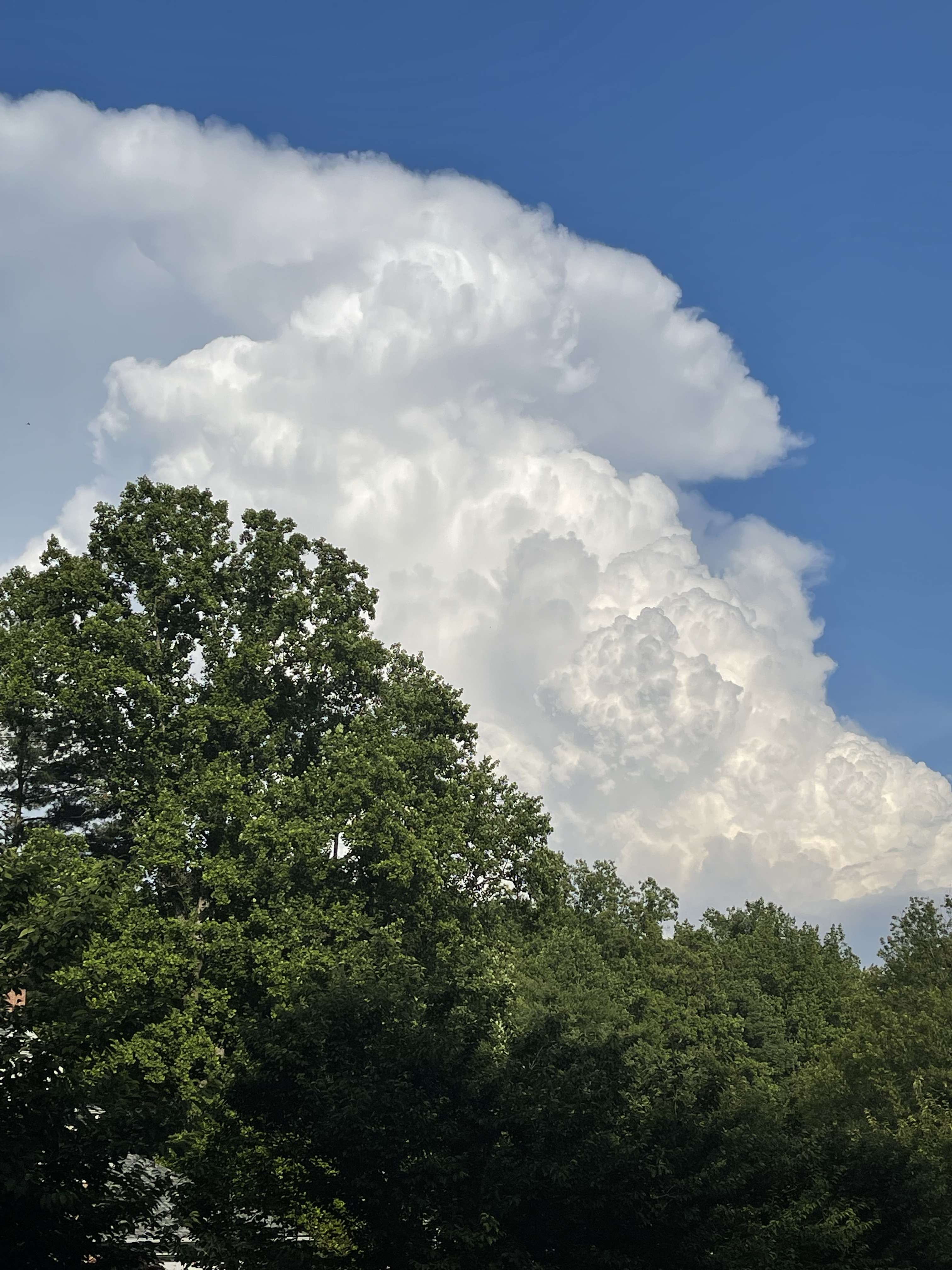-
Posts
44565 -
Joined
-
Last visited
-
Days Won
262
Posts posted by Phil
-
-
Crush job and bifurcation:
1mb
http://img822.imageshack.us/img822/3540/hpda.jpg
10mb
http://img194.imageshack.us/img194/4586/kbig.jpg
-
Euro has a backdoor arctic push. The pattern looks screwy as the vort lobe becomes dislodged from the main branch of the northern jet and the pattern takes on a split flow look. Not a very healthy block.
The Euro loves to hang vorticity back around meridional flow..so you get a lot of pseudo cutoff lows. I wouldn't worry about it..
-
That is, until I move to Montana in a few years.

Oh you lucky dog. My wife refuses to even consider Montana. Don't be surprised if I pop by with some cuban sticks and moonshine.

-
You know the thing about the 12z is that the actual evolution that leads to the arctic outbreak is in the believable range and the arctic front itself is within 10 days. Details will flucuate wildly of course, but it looks like we could be moving toward something good.
Not to be rude, but weren't you downplaying the whole event last night based on a few bad GFS runs?

I'm rooting for you guys. If anyone deserves to score at this point, it's the PNW.
-
This is crazy.
Winter Storm Watches in:
New Orleans LA
Gulfport MS
Tallahassee FL
Savannah GA
What has the world come to when coastal FL is colder and snowier than parts of coastal Alaska?
-
Exactly what I was just going to say. This will be interesting...I hope.
West coast ridge dominates until the Feb 7-8 on this run. Brutally cold for the Midwest and East.
-
Arctic blast after hr 300, pushed back a day compared to 18z
-
The 1800s were amazing here too. I certainly hope much of that was related to the inactive sun. Supposedly the 1600s were even more extreme. I can't imagine some of the winters we may have had here then!
The 1600s/early 1700s were obscenely cold. There has been a ton of paleoclimatological research done on this matter..so when I get home I'll try to dig it up.
-
It would require a lot of writing and linking. I'm on my IPhone so when I can get back to a PC I'll put something together in the climatology forum.WeatherPhil can you tell us how the Hadley,Ferrel and Polar Cells effect the Jet stream, in layman terms, unless that takes too much time to do?
I'll just say this and shut up. There's a reason the most intense winters in North American history occurred during the prolonged solar minimums..and tended to be warmer during the decades featuring an active Sun, specifically a strong solar wind. Looking at the isotope history in the GISP/Vostok ice core data, the transition we're about to go through may very well be the most dramatic in several thousand years. I personally know a few Danish scientists who do the analysis on the ice cores, and they've confirmed my suspicion.
The winters during the Dalton Minimum during the 1800s were extreme..NY harbor froze over on numerous occasions, as did the Chesapeake Bay.
If you think that's impressive, look at Native American tales of winters that occurred during the Maunder Minumum. We'd be scared s**tless if that were to occur now.
I'll have to dig up the research/history on this. But I'll say, it's nothing short of fascinating.
-
Even if this winter doesn't pan out for the west, you've gotta feel good about the return to extreme mid-winter cold over much of the US.
History clearly tells us that when we see numerous cold winters on a decadal/multi-decadal timescale, everyone ends up hitting the jackpot eventually.
I've been seeing some good signs on a global scale, which started back in 2012. We're quickly leaving the 1998-2012 regime which was marked by broad, poleward-migrating Hadley Cells and a significant drying of the tropical atmosphere above 600mb. The circulatory system is in a transition state..once we leave the current solar maximum, the dominoes should begin to fall.
-
February will likely end up below normal... but that does not mean it will be memorable. I just wish it would be wet.
Uh, who hacked Tim's account??
-
Arctic blast on the GFS beginning around 276-288hrs.
-
That ridge over AK is pure insanity on the 18z GFS.
-
One error the CFS seems to be making is making the south central US way too cold. The ECMWF models say that is totally bogus. If it's wrong about that I would expect the cold penetration in the West to be greater.
Actually, thus far it's been the other way around. The ECMWF has been trying to pop a SE ridge since early January, which has failed to verify.
The Pacific block is a near certainty. The SE-ridge would be a downstream response and it's existence will depend on a number of factors that are difficult to determine right now.
-
Honestly I think (for now) we should have 4 pinned threads on one forum.
- NW US
- SW US
- Central US
- Eastern US
This way the community is not divided and will have more opportunity for inter-forum communication and growth.
This is how EasternWX got so big. Only when the forums were large enough to warrant subforums, were they implemented over there.
-
Models look way too dry, and the pattern being shown is not conducive of substantial QPFs for a widespread PNW 4"+ event at this stage.
Not true at all, from a 500mb perspective. Shortwave activity will usually not be picked up on from this stage anyway, especially post-truncation.
I much prefer lows dropping down the BC coast than banking on overrunning. This event looks bone dry, again, for my locale. Of course, CZ is always in the cards.
Not to be rude, but I can't believe you're saying it will be a "bone dry" event 10+ days out, when just 1hr ago you were claiming the GFS was smoking pot with it's entire solution. Make up your mind, dude..

On a lighter note, when did you fly back to BC from Ontario? Sounds like a lot of back & forth.
-
 1
1
-
-
Wow @ the 12z GFS ensemble mean. I've never seen a signal this strong @ hr 300+ before..ever.
Only now, we don't have to deal with the giant PV over Greenland. So this is a better setup than December, assuming it verifies.
http://img713.imageshack.us/img713/3379/76dh.jpg
-
 1
1
-
-
Yeah, you don't want the block too far offshore or flow will turn onshore and snow levels will rise. Northerly/NNW flow in the upper levels is the best, especially in Oregon.It is a great run. What are you talking about?
That's what allowed a shortwave to deepen into "Storm King" in 1880. It's also what produced December 2008.
-
I agree entirely. I was discussing the chances of a 4"+ snowfall being less likely than usual, not arctic air. I think the shot of modified arctic air spilling into the region is above average for sure. As seen with last month, arctic air and large snow events do not go hand in hand.
I disagree. The chances of a 4"+ snowfall go up dramatically in the PNW lowlands with arctic air around. Shortwaves producing precipitation won't be picked up well (if at all) out at this range..we need to focus on getting the cold air in.
This isn't Minnesota, where arctic air is nearly irrelevant to snowfall.
-
 2
2
-
-
My point exactly. Chances are elevated right now.
The good news now is the PV is nothing like the giant black hole it was back in December/early January. The vorticity maximums are un-stacking as we speak due to continued bombardment from an upward propagating train of wave-breakers.
So given the chaotic nature of the Rossby train and tropical response to the cooling Eq/Strat, this window should be harder to predict than the event back in December, yet offers much more potential as well.
-
It's too far off to really take seriously. It's the GFS, if I had a dollar for every time it showed massive arctic air the in the fantasy range....
Seeing 4" in my neck of the woods of the western lowlands is very likely at least once during the winter. I think it is less likely than usual right now. Once we get into mid February we're going to need 850s below -6C to sustain any decent snows.
I said anything less than 1.5" is a "dusting/coating of snow" in my mind, not 4". I'm asking you now to stop with the personal insults before you get out of hand, again.
The pattern change is not too far off to be taken seriously. Whether it not it leads to an arctic blast in the PNW remains to be seen..but the likelihood of a blast during the window of interest is probably 50/50..in other words, above average.
-
 3
3
-
-
12z GFS splits the PV from 1-10mb with a significant perturbation below 10mb. This can only help things.
-
 1
1
-
-
12z GFS progging coast to coast arctic air out in the LR.
That's more likely at this point than a SE ridge scenario given the fraying PV and lowering NAM state.
-
Significant snowfall totals were reported from Houston TX, through Louisiana down to the Gulf coast of Mississippi..LOL
http://stevengoddard.files.wordpress.com/2014/01/screenhunter_305-jan-24-05-41.gif



January 2014 in the PNW
in West of the Rockies
Posted
The PV is being bombarded by wave breakers and the shifting stress fields associated with the QBO, which is in a declining state. The cooling of the equatorial Strat is slowly igniting the MJO, further amplifying the Rossby wave train.
A weaker/disrupted stratospheric PV increases vertical shear on zonal flow below and reduces downward transport of frigid gases from the polar mesosphere, hence you break down the vortex column and often fall into a -NAM/-EPO dominated regime.